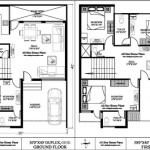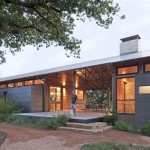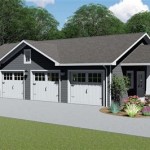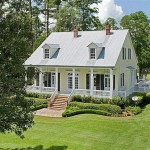Classic Colonial Home Floor Plans: A Timeless Architectural Legacy
Colonial home floor plans represent a significant architectural style with roots tracing back to the early European settlers of North America. Characterized by their symmetry, balance, and conservative elegance, Colonial homes continue to be a popular choice for homeowners seeking a blend of historical charm and contemporary functionality. These floor plans are not merely relics of the past; they are living testaments to enduring design principles that cater to practical living while exuding a sense of established grace.
Understanding the nuances of Colonial floor plans requires examining their historical origins, key characteristics, and variations that have evolved over time. The distinct features of these homes, such as their formal layouts, central hallways, and emphasis on natural light, all contribute to their lasting appeal. Moreover, appreciating the adaptations made to Colonial designs in response to modern living needs provides insight into their enduring relevance.
Symmetry and Balance: The Defining Characteristics
The most immediately recognizable feature of a Colonial home floor plan is its adherence to symmetry and balance. This principle is evident both externally and internally. The exterior façade typically features a centrally located front door flanked by an equal number of windows on either side. This visual equilibrium is carried through to the interior layout.
Inside, the floor plan is often divided into two halves, mirroring each other. A central hallway runs from the front door to the back of the house, providing a clear axis of symmetry. Rooms are arranged on either side of this hallway, typically consisting of a formal living room and dining room. This arrangement creates a sense of order and formality, reflecting the values of the era in which these homes were first constructed.
The placement of fireplaces also contributes to the symmetrical design. In many Colonial homes, fireplaces are positioned on opposite sides of the house, visually balancing the heating source and adding to the overall aesthetic harmony. This attention to detail in the placement of architectural elements reinforces the theme of equilibrium, which is central to the Colonial style.
Variations exist within Colonial floor plans, but the underlying commitment to symmetry remains constant. Whether it's a two-story Georgian Colonial or a single-story Cape Cod, the principle of balanced design is a hallmark of the style. This consistent application of symmetry contributes to the timeless appeal and enduring popularity of Colonial homes.
The Central Hallway: A Pivotal Element
The central hallway serves as a crucial organizing element in Colonial home floor plans. It not only divides the house into symmetrical halves but also functions as a circulation spine, connecting the various rooms and levels. This hallway provides a sense of spaciousness and grandeur, particularly in larger Colonial homes.
Historically, the central hallway served multiple purposes beyond simple circulation. It functioned as a reception area for guests, providing a formal entrance to the home. The width and length of the hallway often reflected the social status of the homeowners, with larger halls indicating greater wealth and prominence. The hallway also provided a natural ventilation system, allowing air to circulate throughout the house, a crucial consideration in the pre-air conditioning era.
In modern adaptations of Colonial floor plans, the central hallway continues to play a vital role. It often accommodates a staircase leading to the upper floors, further enhancing the sense of vertical connection. The hallway can also be adapted to incorporate features such as built-in storage or display niches, adding functionality and visual interest.
The design of the central hallway is typically elegant and understated, reflecting the overall formality of the Colonial style. Wainscoting, crown molding, and decorative lighting fixtures are common features, adding to the hallway's visual appeal. The flooring is often made of hardwood or tile, contributing to the sense of permanence and quality.
Adaptations for Modern Living: Maintaining Timeless Appeal
While Colonial home floor plans are rooted in historical tradition, they have undergone adaptations to meet the needs of contemporary living. Modern homeowners often seek a more open and flexible layout, a contrast to the typically compartmentalized rooms of traditional Colonial homes. Architects and designers have responded to this demand by incorporating features such as open-plan kitchens and family rooms, while still preserving the essential elements of Colonial style.
One common adaptation is the enlargement of the kitchen area. In traditional Colonial homes, the kitchen was often a smaller, more utilitarian space. Modern Colonial floor plans often feature larger, more elaborate kitchens with ample counter space, modern appliances, and eat-in areas. These kitchens often flow seamlessly into adjacent family rooms, creating a more informal and social living space.
Another adaptation is the incorporation of multiple bathrooms and walk-in closets. Traditional Colonial homes often had fewer bathrooms, reflecting the limited plumbing infrastructure of the time. Modern Colonial floor plans typically include en-suite bathrooms for the master bedroom and additional bathrooms for other bedrooms or guests. Walk-in closets have also become a standard feature, providing ample storage space.
The use of natural light is also emphasized in modern Colonial adaptations. Larger windows and strategically placed skylights are used to maximize the amount of natural light entering the home. This not only enhances the visual appeal of the interior spaces but also contributes to energy efficiency. The integration of modern technologies, such as energy-efficient windows and insulation, further enhances the practicality of Colonial homes.
Exterior modifications are also frequently implemented. Garages, often absent in original Colonial designs, are typically incorporated, sometimes attached to the main house or situated as detached structures that complement the overall architectural style. Porches and patios, designed for outdoor living and entertainment, are also becoming increasingly popular additions.
Despite these adaptations, the fundamental principles of Colonial design remain intact. The symmetrical façade, central hallway, and emphasis on formal living spaces continue to define the overall character of the home. By blending historical charm with modern amenities, Colonial home floor plans continue to appeal to homeowners seeking a timeless and livable design.
The enduring popularity of Colonial floor plans is a testament to their versatility and adaptability. Whether it's a meticulously preserved historical home or a newly constructed replica, the Colonial style continues to resonate with those who appreciate its elegance, balance, and enduring appeal. The careful consideration of symmetry, the pivotal role of the central hallway, and the thoughtful adaptations made for modern living contribute to the timeless legacy of Colonial homes.
Further exploration into specific Colonial sub-styles, such as Georgian, Federal, and Dutch Colonial, reveals the diversity within this architectural tradition. Each sub-style boasts its own unique characteristics and historical context, offering a nuanced understanding of the evolution of Colonial home design. The study of these variations provides a richer appreciation for the enduring influence of Colonial architecture on American residential design.

Classic Colonial Home Plan 32563wp Architectural Designs House Plans

Colonial Manor House Plans For A Traditional 4 Bedroom Home

Colonial House Plans Dutch Modern More Monster

1923 Colonial House Plans Vintage

1925 Colonial Revival Classic Home Two Story Bowes Co Hinsdale Il House Plans Beach Mediterranean

House Plan 59952 Traditional Style With 1870 Sq Ft 3 Bed 2 Ba

Colonial Manor House Plans For A Traditional 4 Bedroom Home

Classic Colonial 3992st Architectural Designs House Plans

Morgan House Plan Suggestions Building With Assurance Colonial Plans Vintage

Early American House Floor Plans Historic Homes Brand








